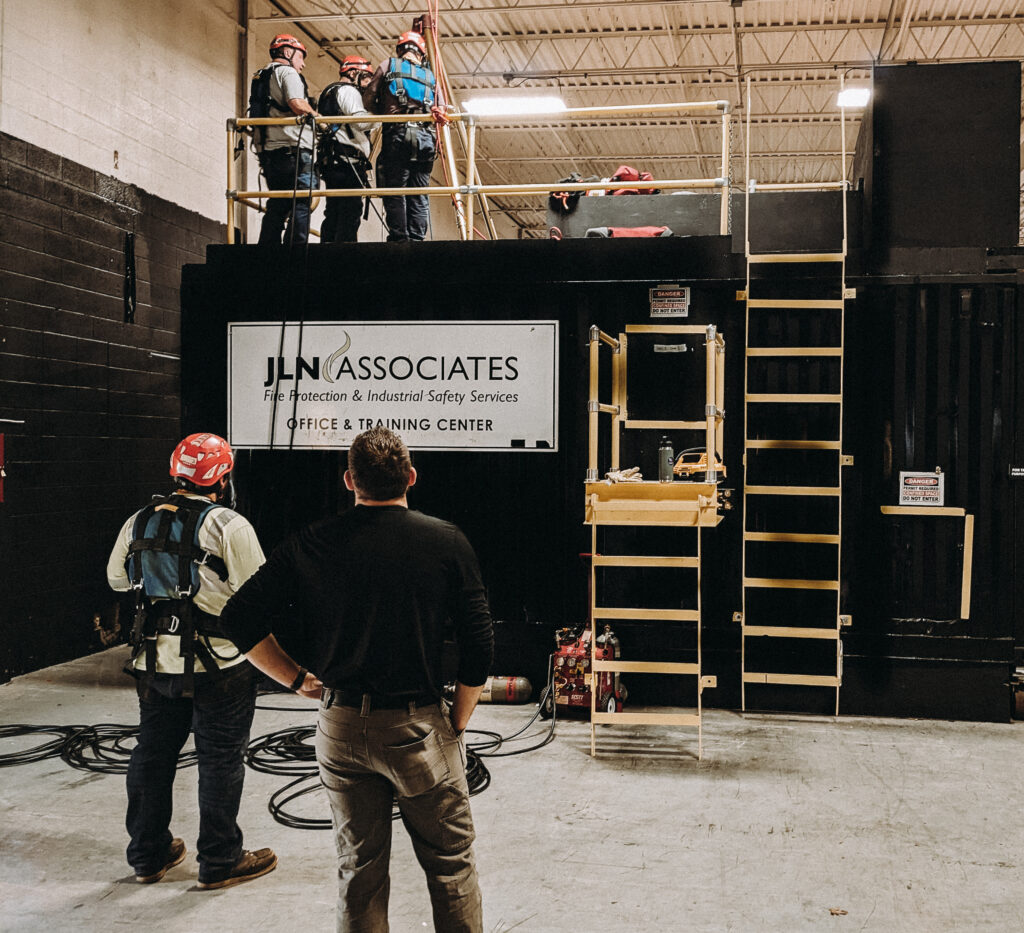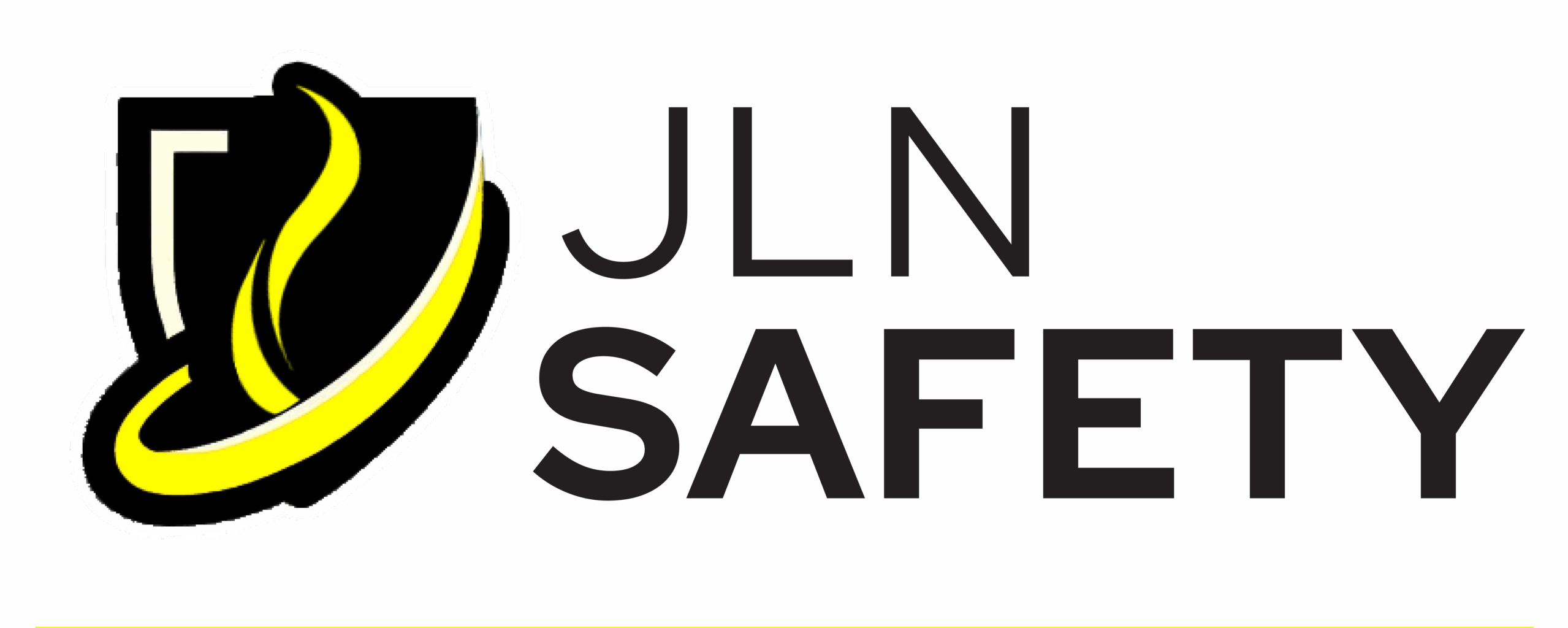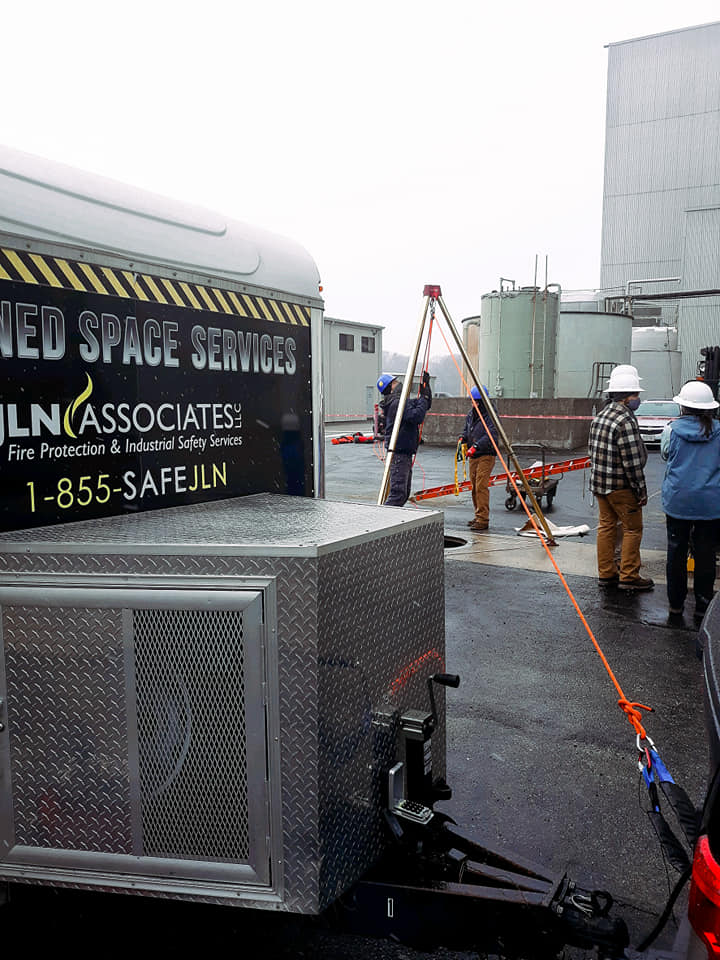Confined spaces don’t give second chances. Whether it’s a tank, tunnel, silo, or vault, these environments can turn deadly in seconds – making confined space rescue one of the most critical components of your site safety plan.
At JLN Safety, we specialize in protecting workers who enter these high-risk areas by providing standby rescue teams, OSHA-compliant training, and real-world planning support across the Northeast.
Here’s what every facility should know.
Why Confined Spaces Are So Dangerous
Confined spaces are defined by OSHA as areas that are large enough to enter, have limited means of entry or exit, and are not designed for continuous occupancy. What makes them truly hazardous, however, are the hidden dangers:
- Oxygen-deficient or toxic atmospheres
- Engulfment risks from liquids or solids
- Physical entrapment or entanglement hazards
- Limited visibility and communication issues
- Difficulty reaching an incapacitated worker
Even with ventilation and permits, rescue readiness is non-negotiable. Without a trained team onsite, emergency response times can be fatally slow.
Standby Rescue Teams vs. 911: What’s the Difference?
Many companies mistakenly assume that calling 911 is a sufficient confined space rescue plan. It’s not.
Emergency responders may not arrive in time, or may not have the specialized training and equipment to conduct a safe confined space extraction. OSHA requires employers to ensure that rescue services are capable, trained, and available immediately.
That’s why many high-risk facilities bring in JLN Safety’s Standby Rescue Teams – so rescue isn’t minutes away, but already on-site.
Our Confined Space Rescue Capabilities
JLN Safety provides highly skilled, properly equipped, and site-ready rescue personnel for:
- Permit-required confined space standby
- Entry and non-entry rescue planning
- Vertical, horizontal, and complex retrievals
- Rescue plan development and documentation
- Coordination with site supervisors and fire watch
Our team includes firefighters, EMTs, and rope rescue professionals who are experienced in utility, manufacturing, energy, and infrastructure settings.
Confined Space Training That Meets OSHA & NFPA Standards
We don’t just respond – we prepare your team with hands-on confined space rescue training. Courses are held at the JLN Safety Training Center in Old Lyme, CT or delivered onsite at your facility.
Topics include:
- Hazard identification and air monitoring
- Tripod, winch, and retrieval systems use
- Non-entry vs. entry rescue techniques
- Team communication protocols
- Compliance with OSHA 1910.146 & NFPA 350
Training is built around your equipment, your team, and your jobsite realities.
Real-World Example: Rescue Readiness in Action
During a shutdown at a power generation facility, our JLN Safety standby team identified a hazard during a confined space entry – a heat exchanger contained a buildup of toxic vapors. Before entry even began, we halted the process, ventilated the space, and prevented a potential H2S exposure.
That’s not just oversight. That’s prevention.
Bring JLN Safety to Your Next Entry
If confined spaces are part of your operation, you need a confined space rescue plan – and a team that can act instantly if something goes wrong.
🟡 Contact us today to schedule standby coverage or enroll your team in confined space training:
👉 www.safejln.com/contact
JLN Safety is your partner in prevention.
From power plants to processing facilities, we don’t just inspect—we protect.



Leave a Reply